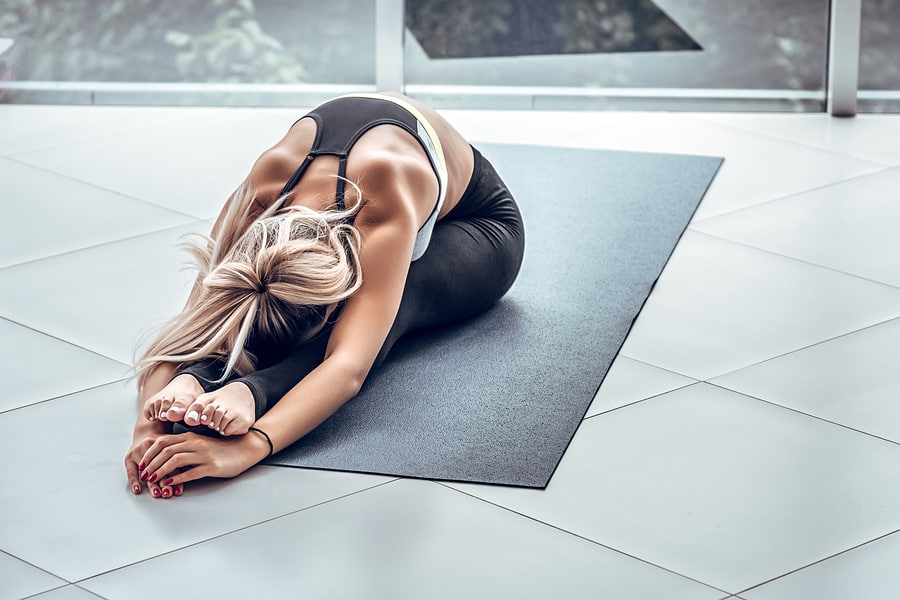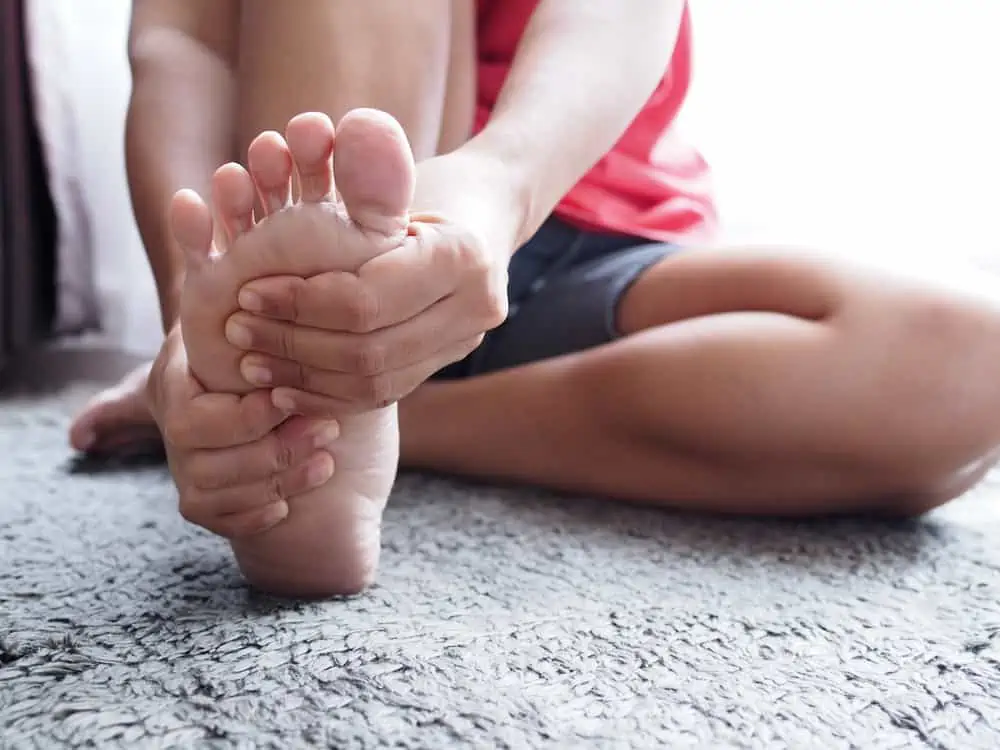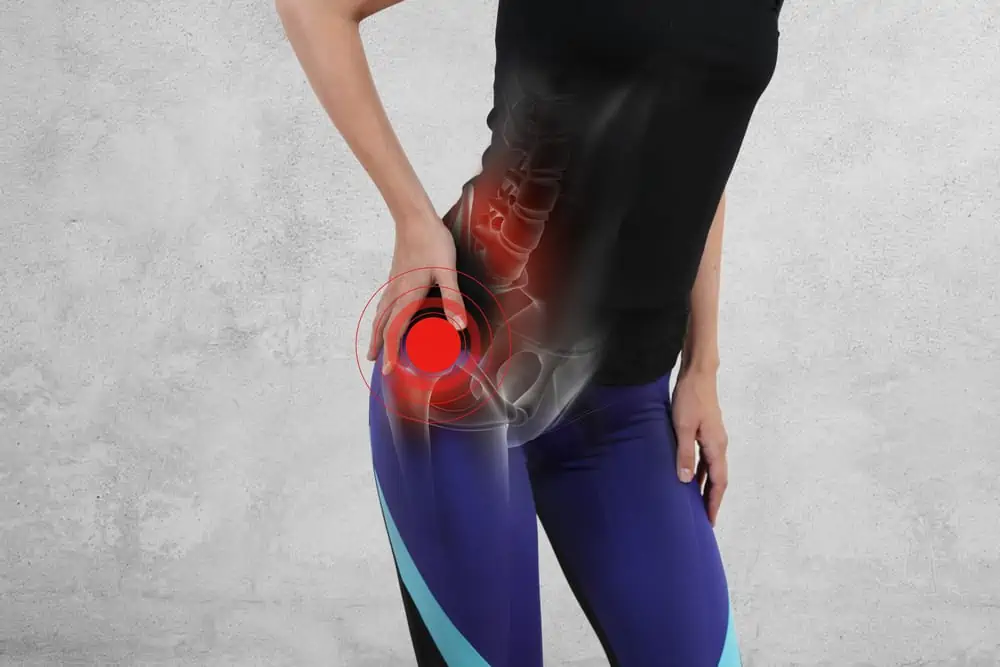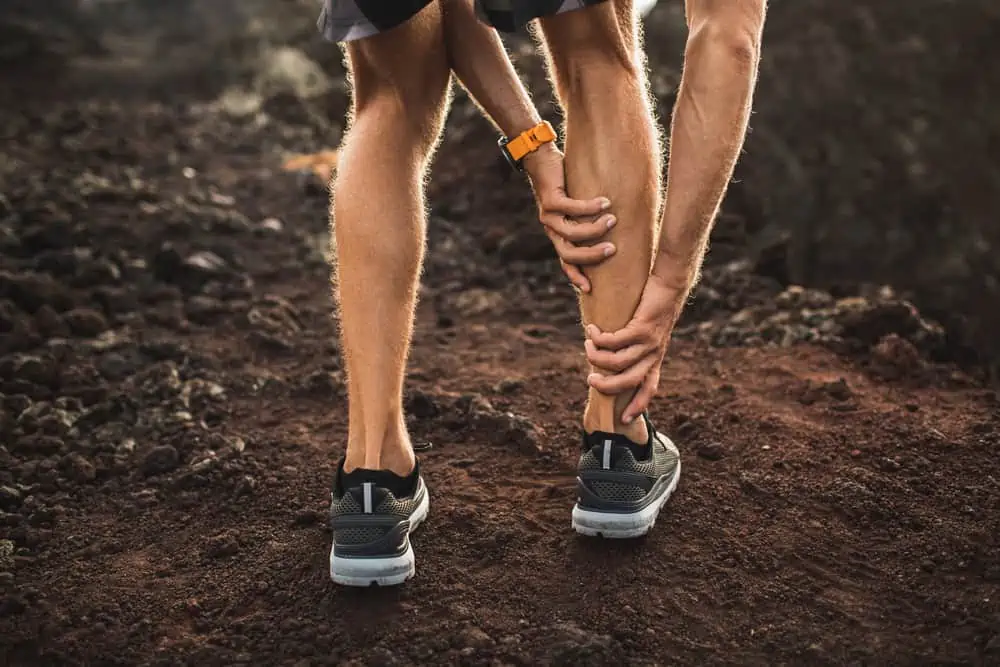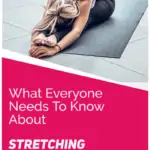There are an abundance of myths surrounding fitness, and stretching is no exception. Stretching is not a waste of time, yet people often make excuses to get around doing it.
If I told you stretching could help you perform a squat or lunge with better form, would you do it?
What about have less pain while sitting at your desk? Or have an easier time reaching something in the back seat of your car?
Stretching can actually improve other aspects including strengthening, functional activities, and general quality of life.
But that’s only if you’re stretching properly. Keep reading to find out how to stretch the right way.
Anatomy for stretching
As the proud owner of a human body, you already know it can be a really complicated place. So much goes on behind the scenes that we never have to think about and it is fascinating. This is a super basic version to help you understand what goes on when you stretch.
Muscles are made of soft tissue, arranged in fibers, that contract (shorten) and relax (lengthen) to produce movements.
Tendons connect muscle to bone. Tendons have receptors that communicate with the brain and spinal cord to relay information. They produce movement by telling the muscle to contract or relax.
Ligaments connect bone to bone and are involved in overall joint stability but do not produce movement and do not contract or relax.

We could write an entire book on the physiological effects of stretching, and there are some great research articles in the reference section if you’re looking to get your science on.
But to keep it simple, just know that stretching is more than what’s going on locally at the muscle.
It’s actually a complex process in which receptors in the tendons communicate with the brain and spinal cord to send the correct information back to the muscle.
The response can vary depending on what sensations are put into the system. This all happens faster than the blink of an eye.
Cool right?
Because the receptors in the tendon are there to protect you, they resist rapid changes in muscle length. (Page, 2012).
For example, if you move too quickly or too far into a range of motion (ROM), the receptors interpret this as dangerous and do not allow the movement as a protective response.
This is really important to understand as you move through ROM, listen to what your body is telling you!
Rapidly forcing a movement could lead to a strain or tear in the soft tissue.

Benefits of stretching
The benefits of stretching include increased flexibility and joint ROM, increased blood flow to muscles, improved posture and postural awareness, stress relief, and just makes us feel good.
If you’re thinking stretching feels terrible, you’re probably doing it wrong. Keep reading.
Unfortunately, the research does not indicate that stretching decreases the risk for overall injury or assists with delayed onset muscle soreness (DOMS) following a workout.
ROM is made of several structural components including the health and integrity of the joint, the soft tissue capsule that surrounds it, stabilizing ligaments, and health of the muscles and tendons that function to move the joint.
Injuries to any one of these components can change available ROM.
Flexibility exercises performed properly can help maintain or increase ROM over time.
Consistency with a program is essential to reach these goals as stretching has cumulative effects.
If you have specific injuries, you should work with a physical therapist to determine which stretches would be beneficial or not appropriate for you.
My argument for why stretch comes from an overall movement analysis angle (which is what physical therapists do best!).
If we don’t consistently move our joints and soft tissues through their full available ROM, over time that ROM can decrease along with degenerative changes.
Of course, flexibility doesn’t exist in a vacuum, mobility exercises and strengthening are just as important to maintain overall quality of movement.
We all know someone who has difficulty standing up straight, tying their shoes, turning to reach something in the back of the seat, etc. These are functional activities that often become more difficult as age progresses.
Don’t wait until you can’t reach overhead to start working on your flexibility.
There’s truth in the phrase if you don’t use it you lose it.
I’m willing to bet older adults never imagined limited flexibility and mobility would make everyday tasks challenging or even impossible.
Read: Mobility vs Stability vs Flexibility – How to Unlock Healthy Movement
How to stretch properly
There are a few different types of stretching techniques.
Static stretching is probably most familiar. That’s when you move into a stretch position and hold that position for a length of time.
The sensation you’re looking for is a mild to moderate pulling feeling. More isn’t better and aggressive stretching not only doesn’t yield results, it sets you up for injuries.
The research suggests holding for 15-30 seconds, which seems to be the sweet spot for flexibility benefits. Perform 2-4 times per set, per muscle group. (Page, 2012).
For those of you who just heard 15 seconds and are already running out the door, make sure it’s a solid 1- Mississippi, 2 – Mississippi.
A legit 15 seconds, which is why I usually say 30. It’s like telling someone to be there at 7:45 so they’re on time for 8:00.
Those of you holding a stretch for 5 seconds, saying you’re always
Stretching takes some time, so lean into it, with good form of course.
Visit the Exercise Library for full tutorials on flexibility for the whole body.

Should you stretch before or after workouts?
The latest research suggests performing static stretching at the end of a workout to get the best results.
Static stretching immediately before exercise has been shown to decrease muscle strength and performance, possibly leading to an increased risk of injury.
Dynamic or active stretching is becoming more well known.
Active stretching involves repeating a movement several times through a range of motion to warm up and prepare the body for activity.
If you’ve ever been early to a football or basketball game, you’ve seen all the players performing dynamic stretching exercises as part of their warm-up.
Bouncing while stretching (aka ballistic stretching) is no longer recommended due to the risk of injury. Remember when we talked about the protective response?
Another type of stretching is called PNF.
PNF stands for proprioceptive neuromuscular facilitation. It’s a very detailed topic with much more than I’m covering here.
For our purposes, one type is contract-relax or hold-relax which are techniques to engage and relax the muscle in an attempt to gain more ROM.
How to get more flexible
Some people are naturally more flexible than others.
To those who think they’ve always been tight, all the more reason to incorporate flexibility into your routine. When done consistently, you will become a more flexible version of you.
Each person is at a different level which is why you should never compare yourself to others. Many different factors are beyond your control.
For example, you can’t change the skeletal structure you were born with or the overall tone of your nervous system.
The way our bones and joints have formed dictates the ROM available to us. You have to work with what you’ve got.
Stretching for beginners
Here are some tips to stretch properly and help keep yourself safe and improve flexibility.
Don’t stretch through pain
When you stretch into a new ROM, there will be some pulling, and maybe it’s not comfortable, but it’s not PAINFUL. Never stretch into pain.
If you’re stretching an area, and there’s a pain in a completely different area that doesn’t go away! Get evaluated by a physical therapist.
Don’t hold your breath
Don’t hold your breath while stretching, this is counterproductive and will limit your results. Regular paced breathing will aid in the relaxation response and help you improve your flexibility.
Plus, you need oxygen.
When to avoid stretching
There are some times when stretching should be avoided. These can include acute muscle strain, fractures, dislocations, localized infections, etc.
Make sure to consult the appropriate medical professional if you have any concerns.
Other considerations
Those who are pregnant or very flexible sometimes referred to as “double jointed” (which is silly, no one has double joints) also need to be extra cautious not to damage joints or ligaments.
This website is another excellent resource for contraindications and precautions with stretching.
Building your flexibility routine
Flexibility and mobility are fundamental pieces of a healthy fitness program.
Perform stretching activities 2-3 days per week at a minimum for a true benefit from stretching.
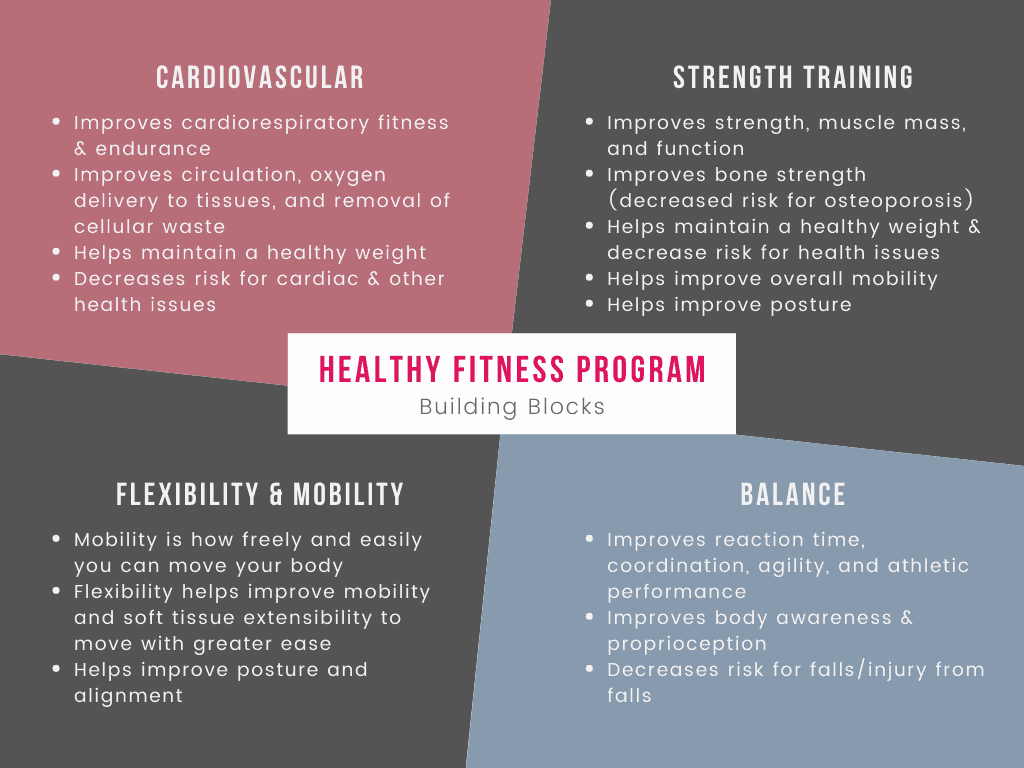
Foam rolling vs stretching
Foam rolling is more like a massage and can be a great adjunct to a flexibility and mobility program but does not substitute.
For best results, foam roll first and stretch after.
Debunking other stretching myths
I’ve come across some buzzwords that tout some workouts are “muscle lengthening.” So I’d like to address how that should be interpreted because it’s not quite what it sounds like.
Muscles have a fixed origin and insertion (meaning endpoints). In someone with normal ROM, muscle fibers only contract and relax so much. So the term “muscle lengthening” is misleading.
They’re not really getting any longer, nor would you want them to, because then they wouldn’t function like they’re supposed to.
Stretching and strengthening exercises may improve your posture and physique, but in most cases muscles are not actually getting longer.
In some conditions, muscles are indeed “contracted” which means functionally shortened and not performing optimally. The goal should be good ROM and flexibility to maintain mobility.
While the “muscle lengthening” claims will definitely persist, just know what to expect and move on realistically.
For a more in-depth look at the above, here’s a great page.
I hope you’ll give stretching a higher priority as it has some great benefits. A better understanding of what’s really going on will enable you to work more effectively with your body.
Learning how to stretch properly will improve your movement!
Related articles:
- What Is Foam Rolling?
- You Can’t Stretch the IT Band
- Mobility vs Stability vs Flexibility – How to Unlock Healthy Movement
- Yoga for Hamstrings – How to protect & Prevent Injury
Featured image credit: Harbucks / bigstockphoto.com
References
Page, P. (2012) Current Concepts in Muscle Stretching for Exercise and Rehabilitation. The International Journal of Sports Physical Therapy, 7(1):109-119.
Hindle K.B., Whitcomb T.J., Briggs W.O., Hong J. (2012) Proprioceptive Neuromuscular Facilitation (PNF): Its Mechanisms and Effects on Range of Motion and Muscular Function. Journal of Human Kinetics, 31(3):105-113. DOI: 10.24781v 10078-012-0011-y
Sharman M.J., Cresswell A.G., Riek S. (2006) Proprioceptive Neuromuscular Facilitation Stretching, Mechanisms, and Clinical Implications. Sports Medicine, 36(11):929-939.
Samson M., Button D.C., Chaouachi A., Behm D.G. (2012) Effects of Dynamic and Static Stretching Within General and Activity Specific Warm-Up Protocols. Journal of Sports and Science Medicine. 11(2):279-285.

